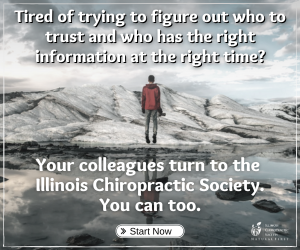
Alzheimer’s and Other Dementias

Cognitive decline is a natural process that is going to affect most of us, much like arthritis and tooth decay. Though we can take great care of our bodies and minds, the wear and tear of time prevail in the end. This being said, as a Chiropractic Physician who is responsible for taking care of an aging population, we must be aware of the differences between normal cognitive decline and diagnosis of Dementia. In this article, I will attempt to familiarize you with the various forms of Dementia and hope to convey the impact this disease is going to have in our nations near future.
There are various forms of Dementia and most of them are diagnosed after the age of 60. Now, more than ever, with a rapidly growing population of baby boomers turning 65 and older, it is our responsibility to accurately diagnose these types of conditions and refer when necessary. I have found many of my patients asking me about cognitive issues such as trouble with recall. In my practice, I often get asked questions like “what can I do for my forgetfulness”, “I have been having trouble finding the right words” or “I frequently forget where I put things.”
Normal Cognitive Decline and Dementia
The ability to determine normal cognitive decline and dementia can have a very long term impact on the patient and family members. Most types of dementia do not have a specific test that can be performed to determine diagnosis; which is why early detection, by way of thorough examination including history, is presently the best way of arriving at a diagnosis.
According to the Alzheimer’s Association, the leading voluntary health organization in Alzheimer’s treatment and research, Alzheimer’s accounts for 60 to 80% of all dementias. Dementia is not a disease but rather a classification of a disease characterized by a significant loss of at least two of the following core mental functions:
1. Memory,
2. Ability to focus and pay attention,
3. Communication and language,
4. Reasoning and judgment, and
5. Visual perception.
Alzheimer’s is the 6th leading cause of death in the US and the 5th leading cause of death for those over 65. In fact, it kills more than prostate and breast cancer combined. Death from Alzheimer’s is increasing at an alarming rate (68% increase from 2000 to 2010), while other diseases such a Breast cancer, prostate cancer, HIV, heart disease, and stroke have all seen a decrease in numbers during the same time period.
Alzheimer’s is expected to cost the American population an estimated $214 billion this year and $150 billion in costs directly to Medicare and Medicaid. Nearly 20% of every dollar spent by Medicare is on dementia.
Presently there is no cure for Alzheimer’s, and research has demonstrated that pharmaceutical agents such as anti-psychotic medication, SSRI’s, or anti-depressants only help temporarily in the early stages of dementia.
Types of Dementia:
Alzheimer’s Disease:
The most common type of dementia, accounting for approximately 70% of all cases. Primarily affecting those over the age of 65 (96%), Alzheimer’s can have an onset as early as 30 years of age. Early symptoms include apathy, depression, and difficulty recalling from short term memory (i.e. names and recent events); a common problem that can be overlooked and attributed to senility. Later symptoms include confusion, disorientation, and motor problems including difficulty swallowing, walking and speaking. Diagnosis of Alzheimer’s requires a detailed medical history, mental status testing, thorough neurological exam and testing that rules out other causes of dementia-like symptoms. Prognosis can range from 3-10 years. Diagnosis of other types of Dementia may not rule out Alzheimer’s. There is no test that is conclusive in demonstrating that a person has Alzheimer’s.
Vascular Dementia
The second most common type of dementia that is sequela to a brain infarct, or stroke. Early symptoms may include the inability to plan steps to complete a task, often without memory loss. The location of the brain injury determines the loss of thinking and/or motor functioning. Diagnosis is made by brain imaging; however, may not exclude other types of dementia. When an individual has any two or more types of dementia, the individual is said to have mixed dementia
Dementia with Lewy bodies vs. Parkinson’s Disease
In dementia with lewy bodies symptoms are similar to Alzheimer’s with early memory loss and thinking problems, but it may also have early symptoms that include sleep disturbances, hallucinations, muscle rigidity, and Parkinson type symptoms. Parkinson’s is different because problems with movement are often observed first followed by progressive dementia. Diagnosis is made by thorough examination and history with imaging studies, which are used to rule out Tumors, vascular issues, or other SOL. Brain changes in dementia with lewy bodies find aggregations of a protein alpha-synuclein in a part of the brain called the cortex, while Parkinson’s differs with the same protein being found first in the substantia nigra.
Mixed Dementia
Symptoms of mixed dementia can be that of any two or more dementia’s that occur simultaneously. The most common mixed dementia is Alzheimer’s with vascular dementia.
Frontotemporal Dementia (FTD)
This is a progressive disorder in which abnormal deposits of certain proteins are found in the frontal and temporal regions of the brain. Symptoms include changes in personality, behavior, and difficulty with language. The primary risk factor for FTD is familial history, as several genes have been linked to FTD. People with this disease often develop symptoms at an earlier age (50-60) than Alzheimer’s and often have a shorter life expectancy than Alzheimer’s.
Creutzfeldt-Jakob Disease
Rare and rapidly fatal brain disorder affecting both humans and other mammals (mad cow disease). Symptoms include impaired memory, coordination, and behavioral changes. Diagnosis is made by a history demonstrating rapidly progressing symptoms. This disease is caused by the spontaneous folding of a prion protein in the brain that causes a cascade event trigger other prior protein to fold throughout the brain. There are 3 types of this disorder based on etiology. The most common type of this disorder accounts for 85% of the cases and is idiopathic in nature. The second type of this disease is genetic dominant and accounts for 10-15% of all cases. The last type is infectious, accounts for 1% of all cases and is caused by either a medical procedure (transplants, surgical instruments, human growth hormone) or ingestion of meat or other products from cattle, deer, elk or moose that is infected with bovine spongiform encephalopathy.
Normal Pressure Hydrocephalus
Caused by excess CSF accumulation in the ventricles of the brain without an increase in CSF pressure. The accumulation of CSF causes enlargement of the ventricles and disruption or damage to surrounding brain tissue. Symptoms include difficulty with memory, walking, and incontinence. Diagnosis can be made using imaging demonstrating enlargement of the ventricles without surrounding brain tissue shrinkage as seen in other forms of dementia.
Huntington’s Disease
A progressive disorder caused by a single defective gene on Chromosome 4. The specific protein on this gene is called Huntington, and, in a normal gene, this protein repeats itself 17 to 20 times. However, in a person with Huntington’s disease, this protein repeats 40 or more times. Symptoms of this disease usually manifest earlier (30-50 years of age) compared to other dementias (60-65 or after). Diagnosis is made with genetic testing and can confirm the presence of the gene in those with symptoms. Testing is often done on those with a parent with Huntington’s disease to screen for the gene in the absence of symptoms.
Korsakoff Syndrome
This syndrome occurs when there is a vitamin B1 deficiency. This condition is seen most often in those that abuse alcohol, however, it may be seen in cases of malnutrition, chronic eating disorders, AIDS, chronic infection, kidney dialysis, and metastatic cancers. Vitamin B1 helps the brain produce energy from glucose, and when the brain lacks B1 it cannot produce enough energy to function normally. This condition is often preceded by Wernicke Encephalopathy, which is a potentially fatal condition caused by a disruption in the brain resulting in confusion, loss of coordination, and abnormal involuntary eye movements followed by memory loss. In this case, the disease may be referred to as Wernicke-Korsakoff Syndrome. Other symptoms of this disease include difficulty learning new information and the inability to remember recent events or conversations. Patients with this condition may fabricate information that they cannot remember believing their fabrications to be true. Treatment for this condition when attributable to alcohol abuse often resolves with supplementation with oral or injectable thiamine and abstinence from alcohol.
Early detection and diagnosis of dementia allow patients and their families a better chance at benefiting from available treatments, planning for the future, reducing stress, and allow for the patient to be more involved in decisions regarding health, legal and financial matters.
References:
“About Alzheimer’s Disease: Alzheimer’s Basics.” National Institute on Aging. N.p., n.d. Web. 24 Apr. 2014.
“Chromosome Abnormalities Fact Sheet.” Chromosome Abnormalities Fact Sheet. N.p., n.d. Web. 25 Apr. 2014.
“Help End Alzheimer’s.” Alzheimer’s Association. N.p., n.d. Web. 25 Apr. 2014.
“Baby Boomer Generation Fast Facts.” CNN. Cable News Network, 06 Nov. 2013. Web. 25 Apr. 2014.

















